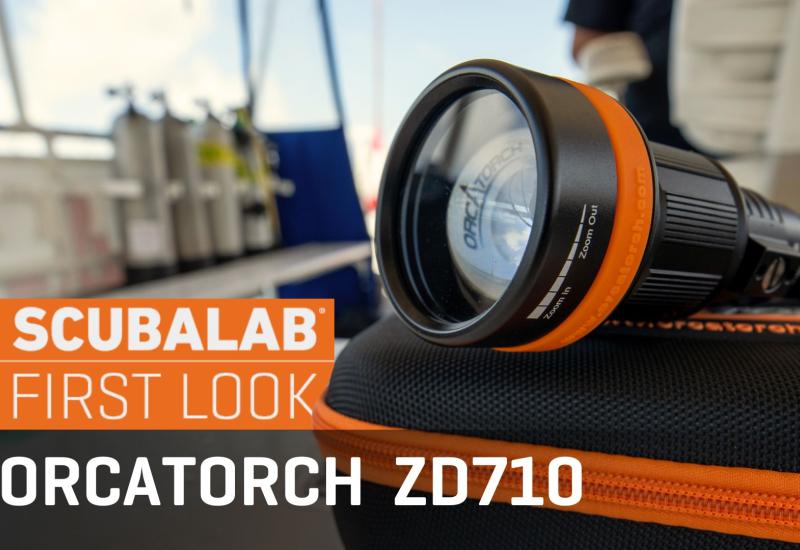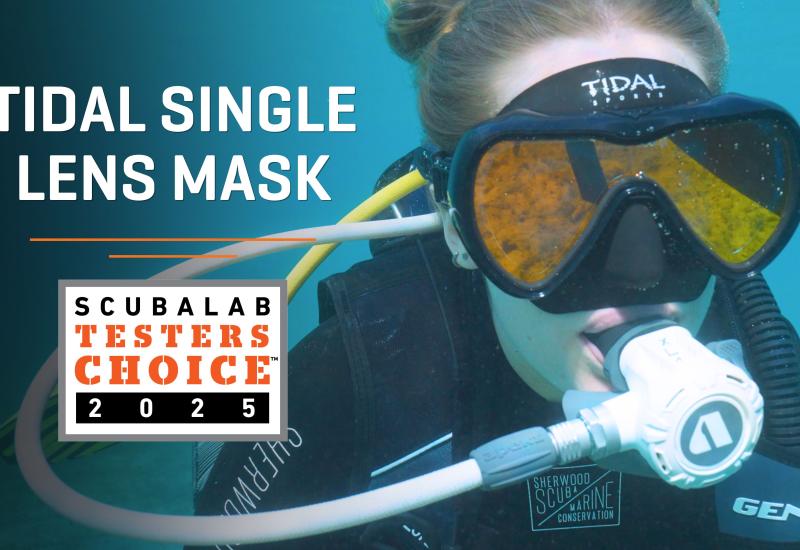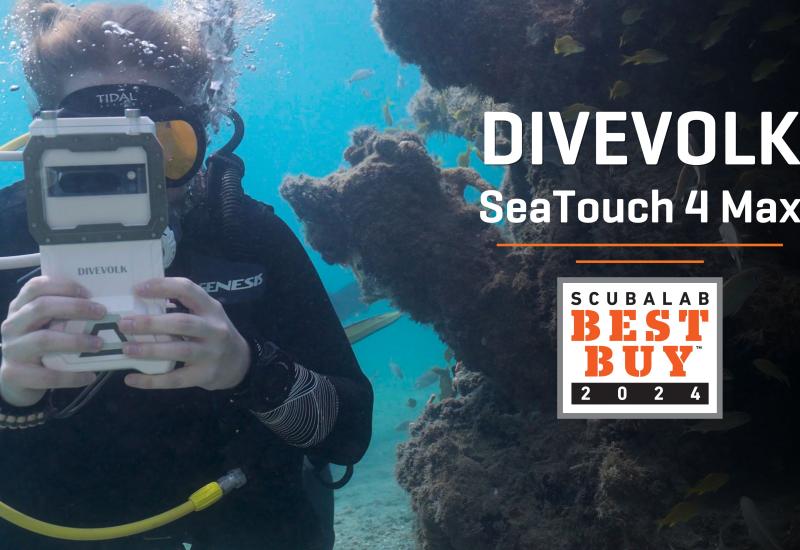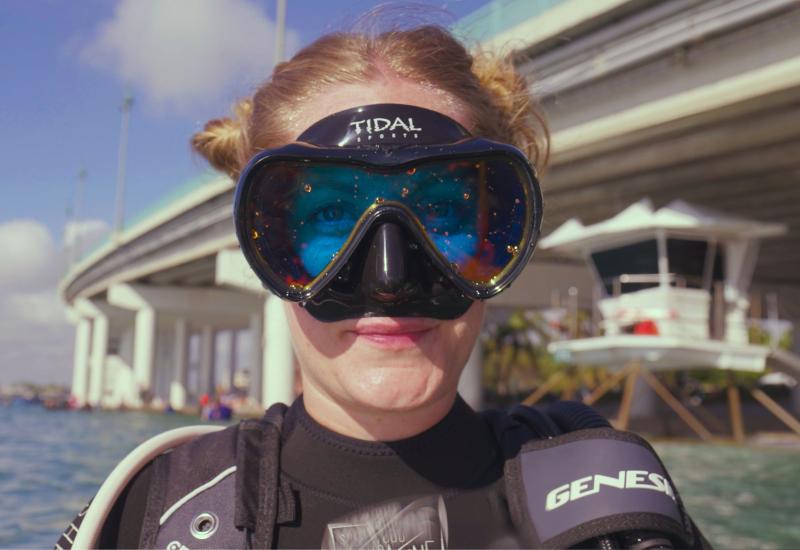Scuba Fin Review 2018
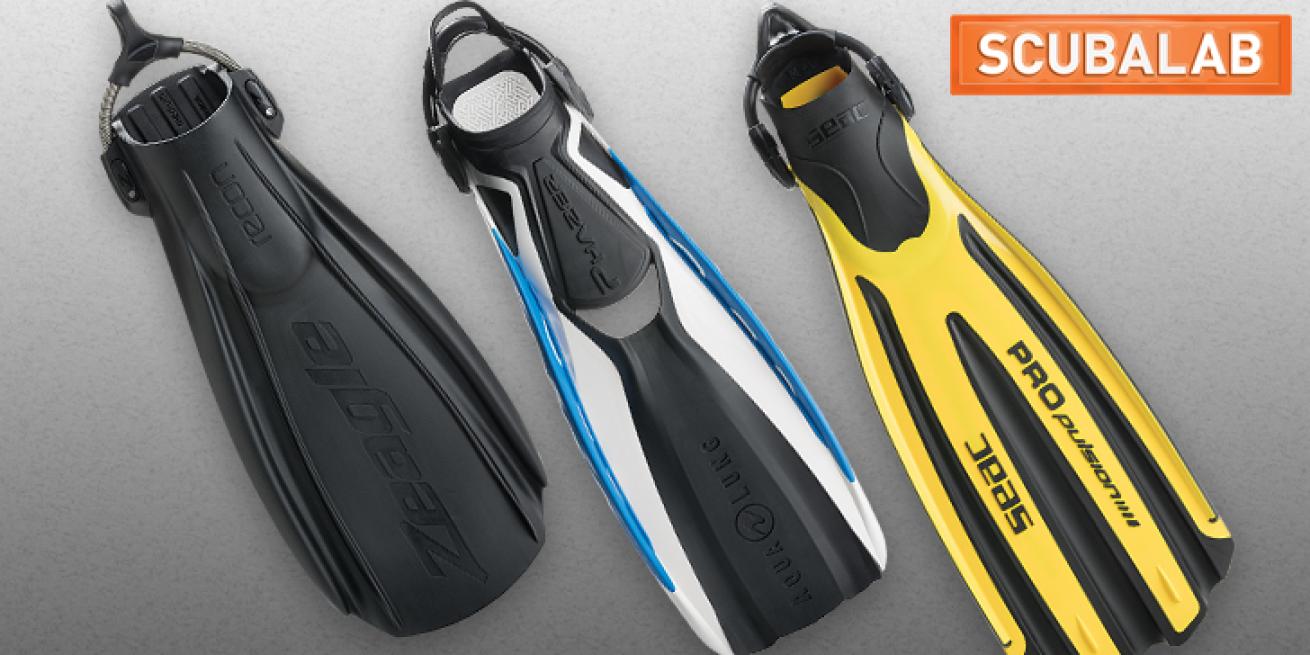
Jon WhittleScubaLab's test divers tested and reviewed 12 of the best new scuba diving fins in 2018, rating the best fins for performance and comfort.
ScubaLab tested 12 of the best new recreational and technical open-heel scuba fins. Here are the models in ScubaLab's 2018 review:
2018 Scuba Fin Review
- Aqua Lung Phazer
- Atomic Aquatics X1 Bladefin
- Cressi Thor
- IST Sports FP01 Sumi
- Mares Excite
- Mares Excite Pro
- Seac Propulsion S
- Sherwood Scuba Triton Pro
- Tusa Hyflex Vesna
- Apeks RK3
- Hollis F1 LT
- Zeagle Recon
Recreational Diving Fins
Aqua Lung Phazer
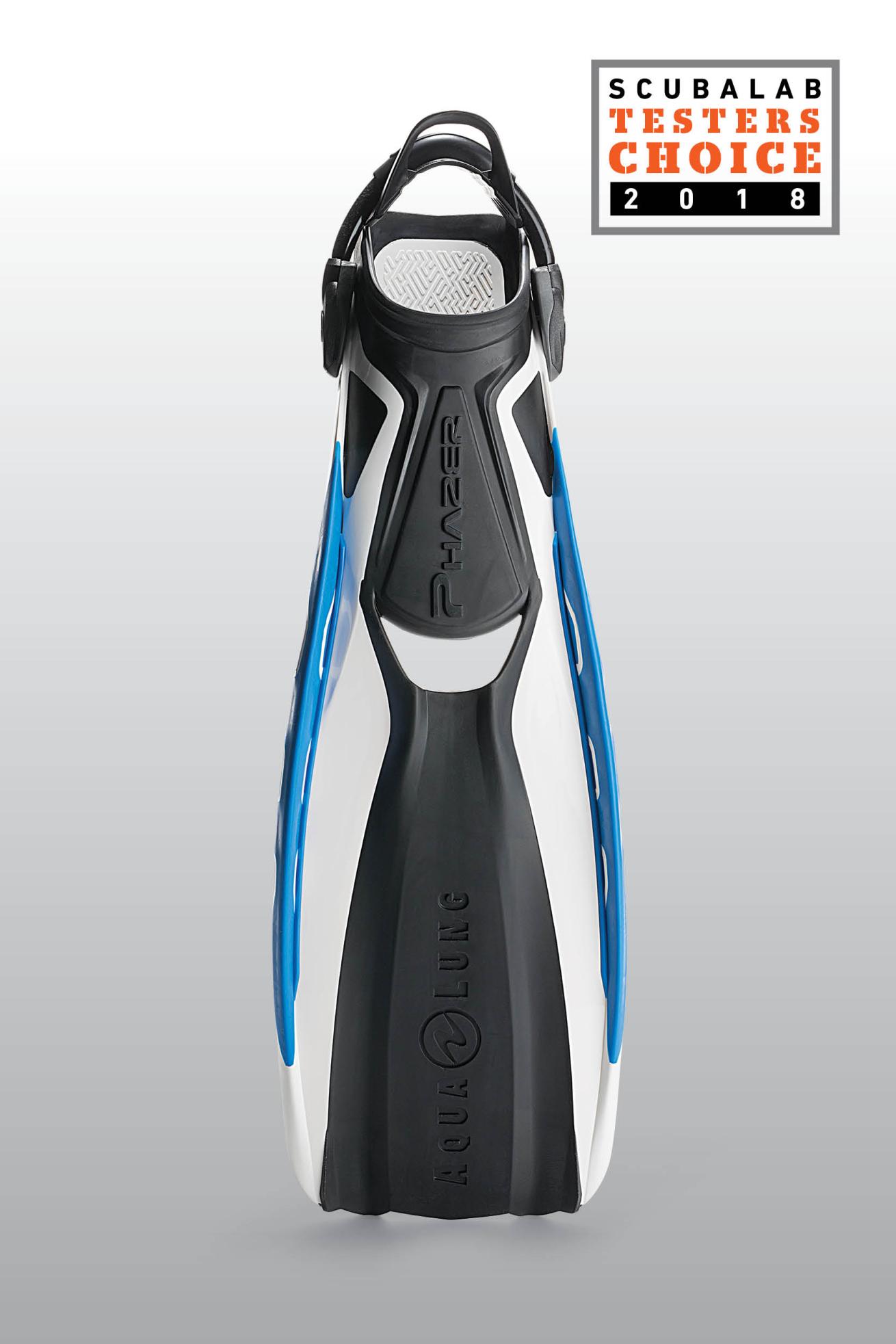
Jon WhittlePrice $199; Aqua Lung
Most fins are made of a mix of materials: hard and soft, plastic and rubber. But what’s unusual is the way the Phazer combines them in the side rails, where you can see the wavy line created by the stiffer plastic surrounded by softer, rubbery material. Aqua Lung calls it a “wave rib”; in the water its effect is a noticeable snap with each stroke — “like they're spring-loaded,” as one test diver described it. The steeply angled blade has a wide, soft pocket to scoop lots of water and a big vent at the toe to keep it moving smoothly without overpowering the legs. That earned the Phazer a very good score for power, and for efficiency in all kicking styles.
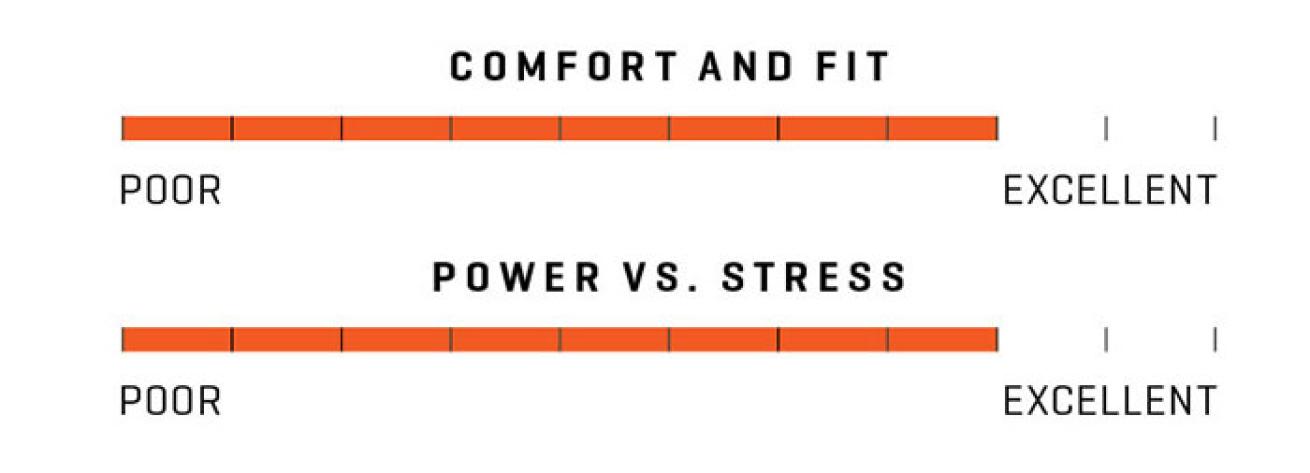
Scuba DivingAqua Lung Phazer
The bungee strap, with a wide, contoured heel pad and a jumbo finger loop, helped it take a very good score for overall comfort and excellent scores for easy donning and doffing. In very tough competition, it was selected among the favorites of more test divers than any other fin in its category. The Phazer is our Testers Choice for open-heel rec fins.
Atomic Aquatics X1 Bladefin
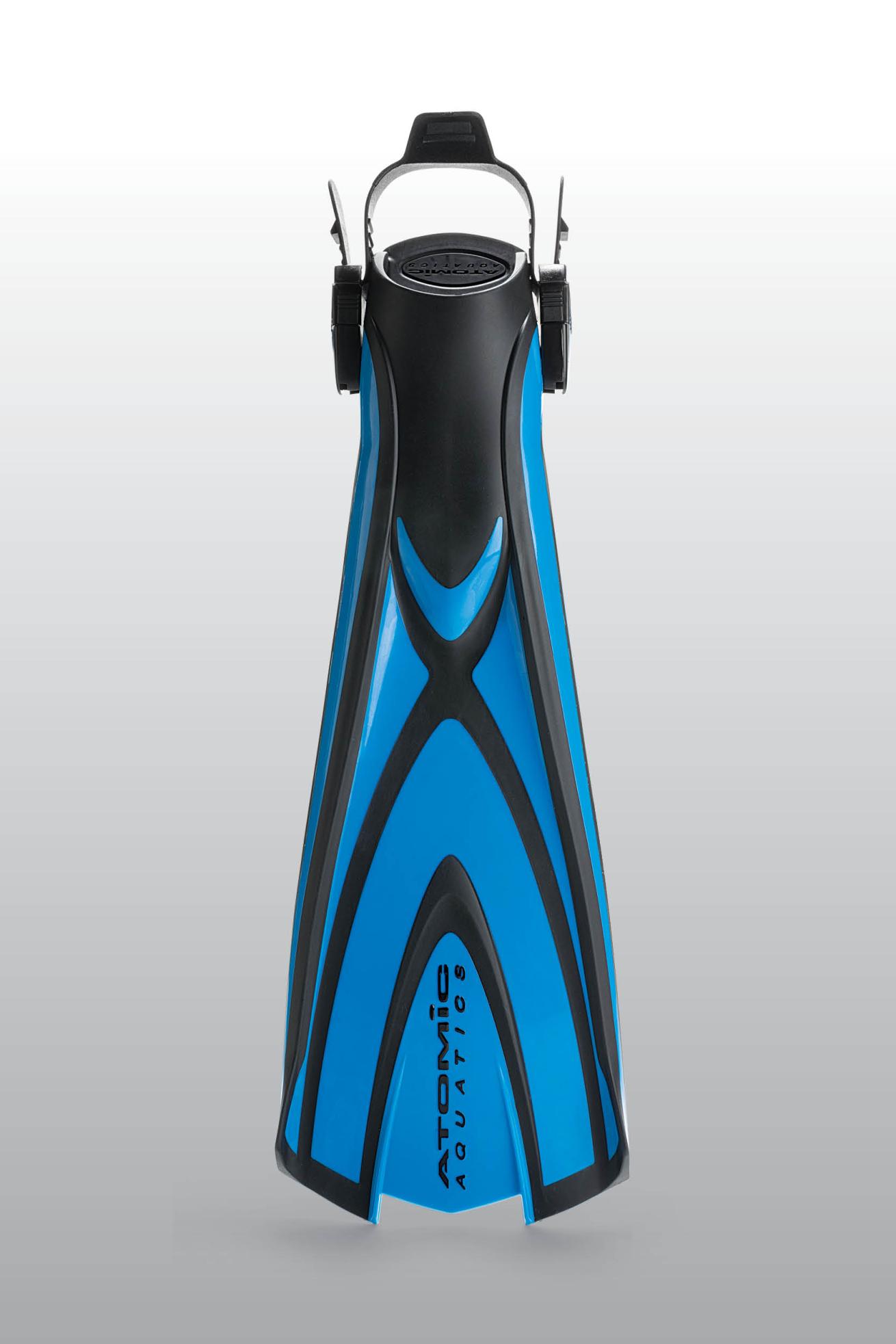
Jon WhittlePrice $119.95; Atomic Aquatics
Call us geeks, but we’re fascinated by how engineers try to solve the puzzle of making fins with power, stability, comfort, etc., and the X1 is a great example. The blades aren’t particularly wide or long (just over 24 inches in medium), and the side rails are barely an inch high. But the X1’s rails have curved cross sections, which stiffen the blade for power, and at the tip they have vertical winglets for stability. Test divers rated the X1 very good for both power and stability.
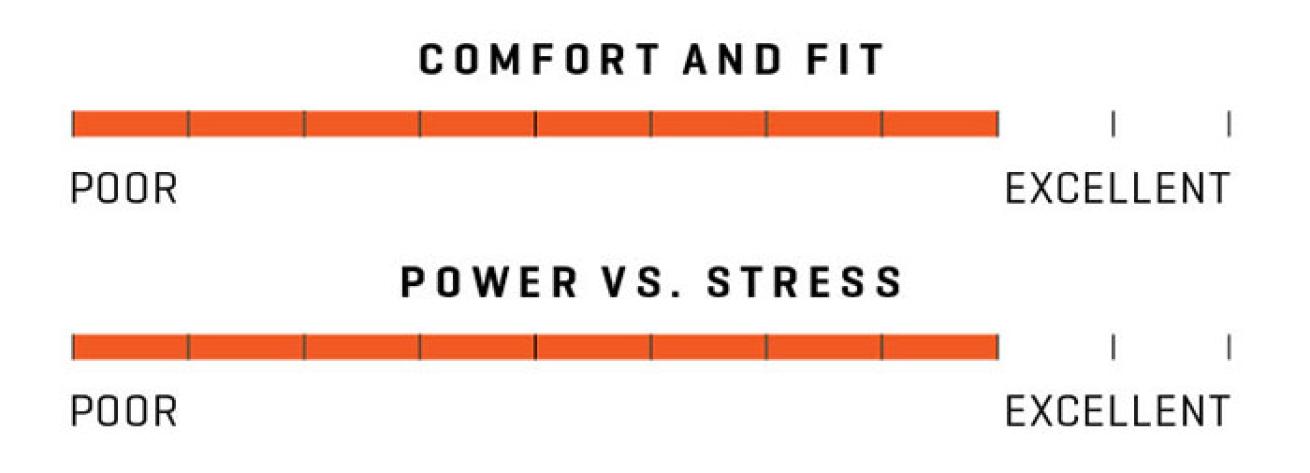
Scuba DivingAtomic Aquatics X1 Bladefin
“Sports car performance,” noted one tester. But individual scores varied quite a bit, with divers who prefer stiffer fins rating it excellent, while those who want a bit more give in the blade scoring it good. The adjustable straps were likewise a split between those who didn’t care for the quick-release buckles and those who loved them.
Cressi Thor
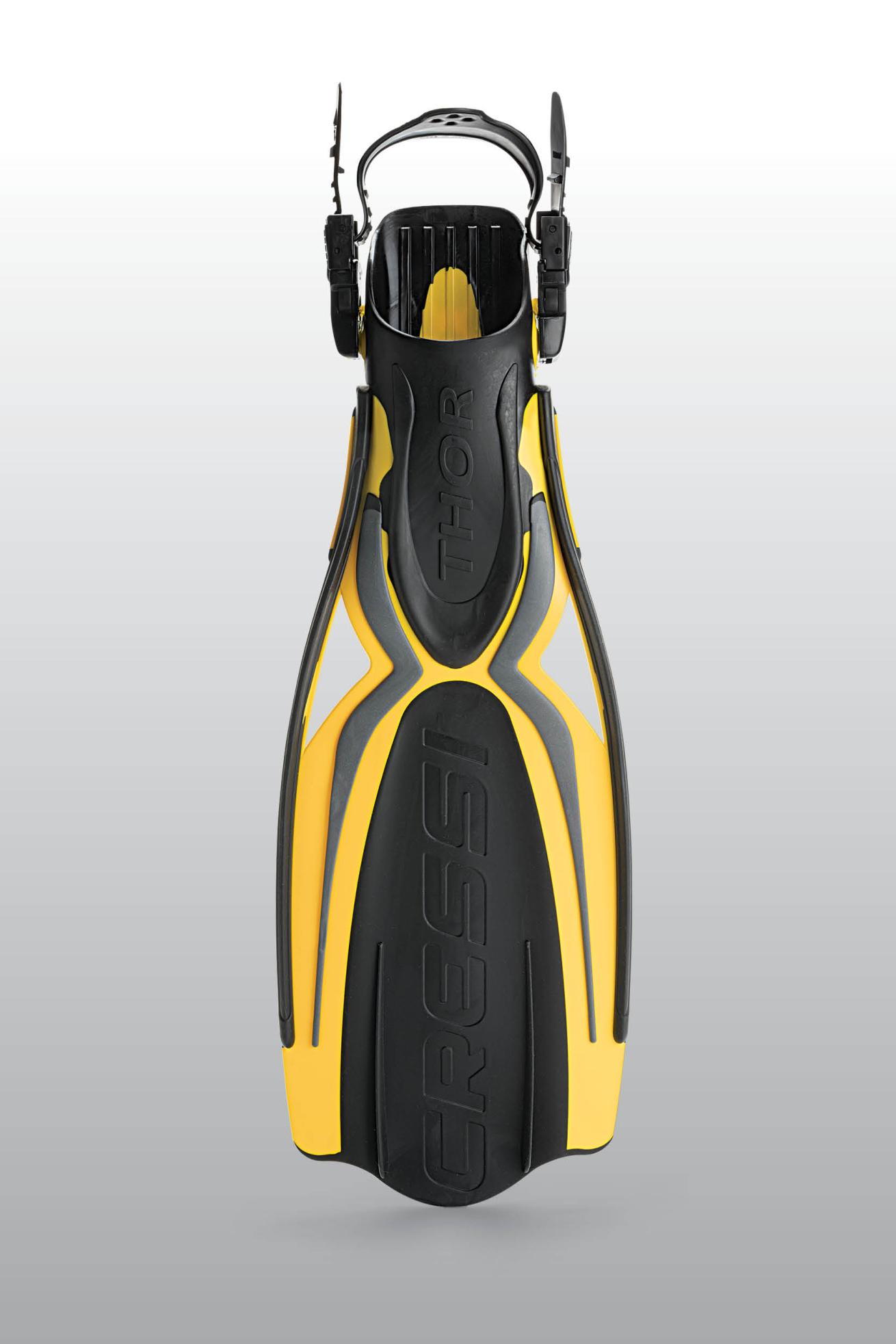
Jon WhittlePrice $179.95, $189.95 with EBS straps; Cressi
With a big, soft-centered blade set at a pronounced angle, the Thor scoops up a fair amount of water with each kick, but the triangular vents along the side of the blade help keep things moving without stress on the legs. That earned the Thor a very good score for efficiency in the flutter kick, where divers noted its ability to maintain a good turn of speed with relatively little effort. Our test fins had adjustable straps that performed well enough, but the Thor is available with the EBS bungee strap we’ve used (and liked very much) on other Cressi fins.
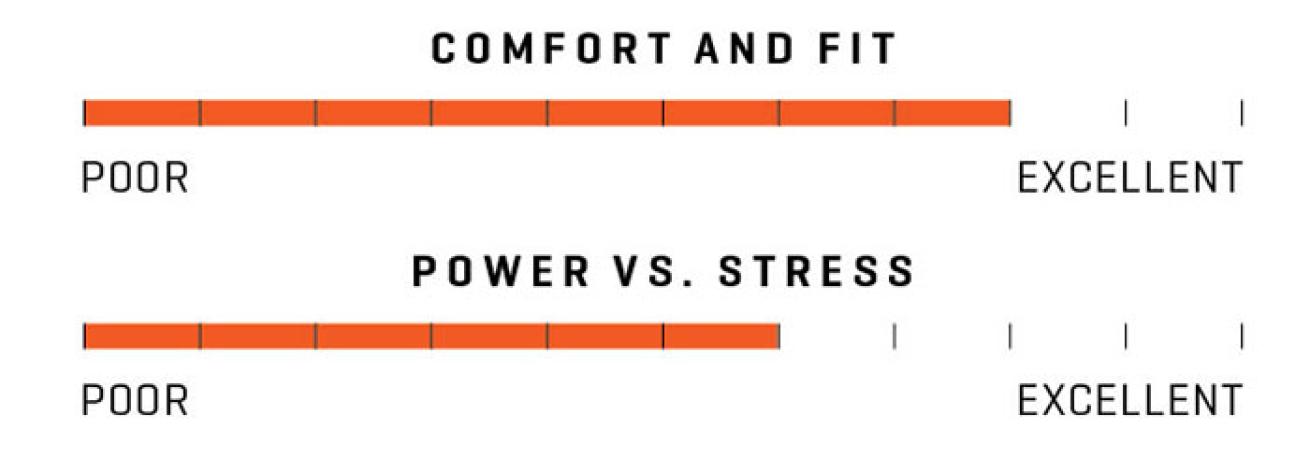
Scuba DivingCressi Thor
As with some of the other new fins in our test, the Thor was available at test time in limited sizes, but those who could wear it rated it very good for comfort and fit. “Nice, solid fin,” was a typical test-diver comment.
IST Sports FP01 Sumi
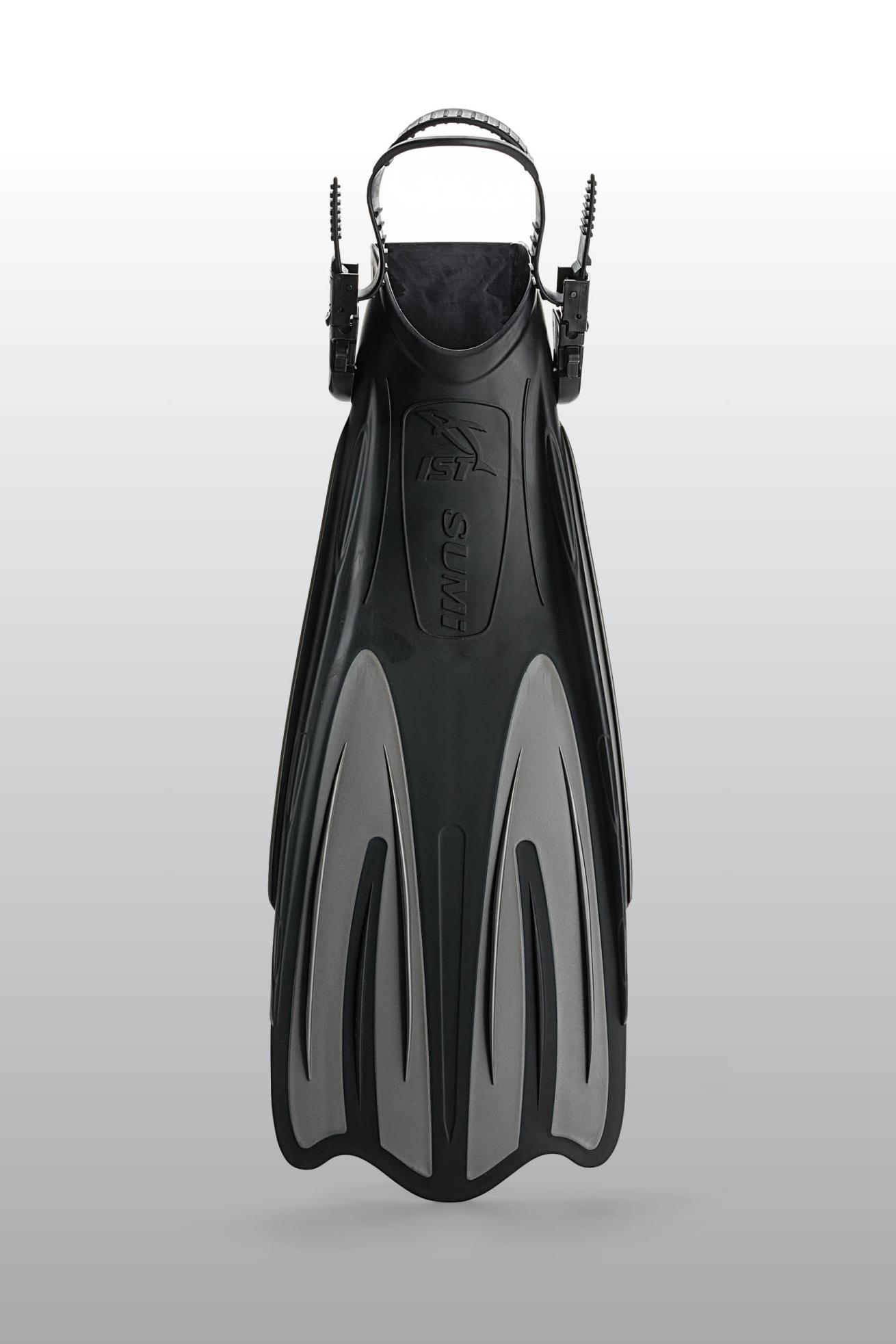
Jon WhittlePrice $100; Ist Sports
The Sumi’s very pliable blade had more than one test diver noting that it felt something like a split fin, with the same pros and cons — little leg stress but quite a bit of kicking required. That split opinions on its effectiveness, between divers who wanted more oomph (“like riding a bicycle in low gear”) and those who liked the low effort (“surprisingly powerful”), but it ended up with an overall score of good for power.
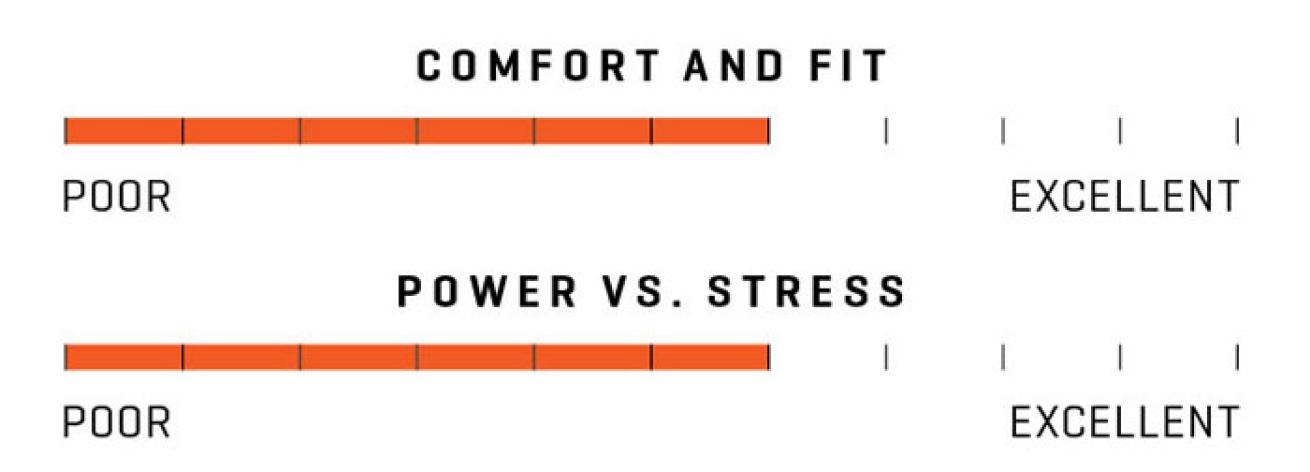
Scuba DivingIst Sports FP01 Sumi
Even with fast kicking, the six vertical ribs on the blade top kept it tracking straight enough to earn a very good score for stability, and the supple, relatively light blade worked well for surface swimming, where it was scored very good. Though we didn’t have a full range of sizes, the Sumi’s foot pocket, softest by far in our test, helped it fit most divers, who rated it good for comfort.
Mares Excite
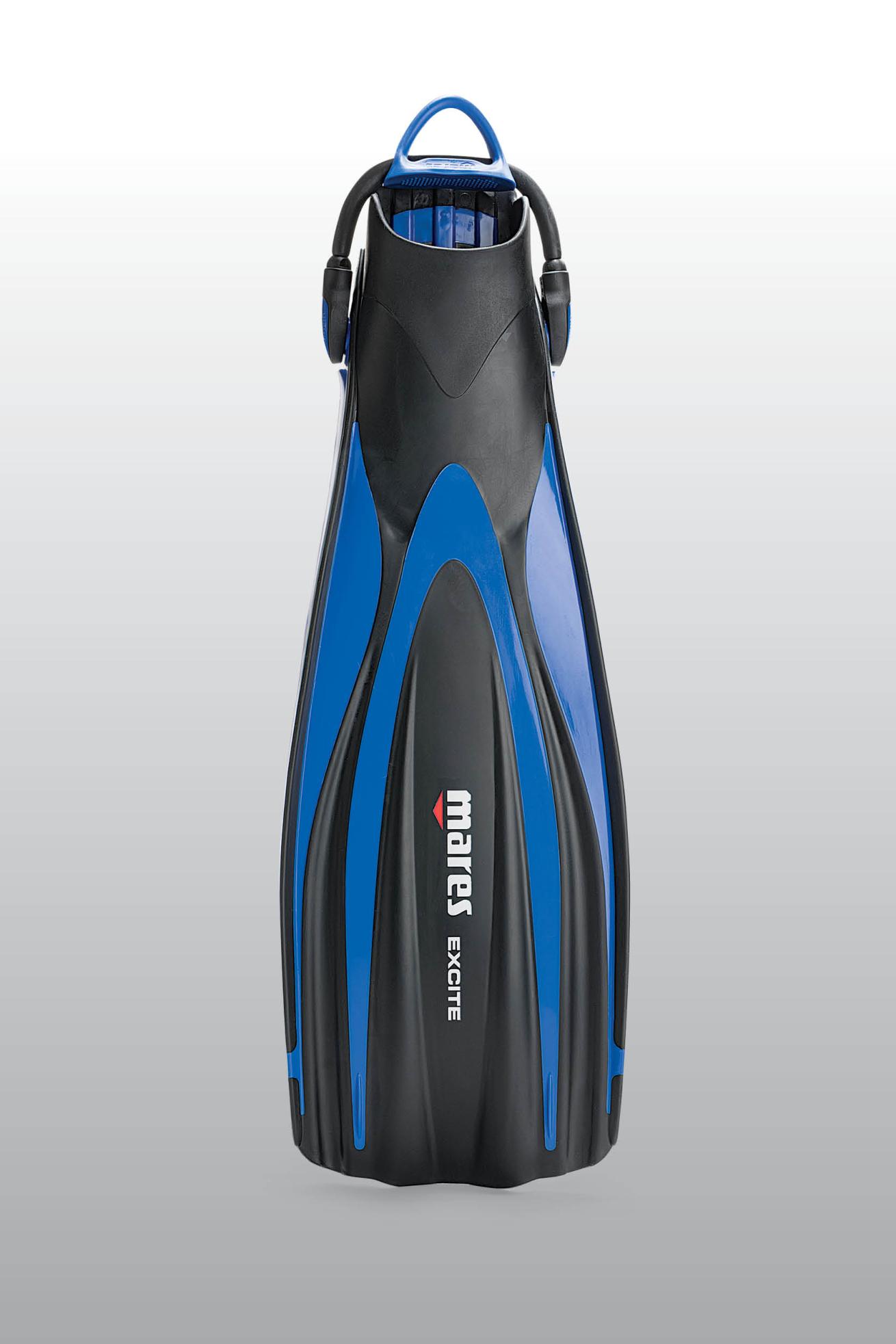
Jon WhittlePrice $170; Mares
The Excite and Excite Pro appear identical, with long blades (26 inches overall in medium), soft channels running the length of the blade, and side rails more than 2 inches thick. But Mares says these twins are fraternal: The Excite “optimized for low fatigue,” while the Pro maximizes thrust. Out of the water, the Excite’s blade felt just slightly more flexible. But it was enough to matter because while the two Excites had nearly identical overall combined scores of very good, test divers noted differences in performance.
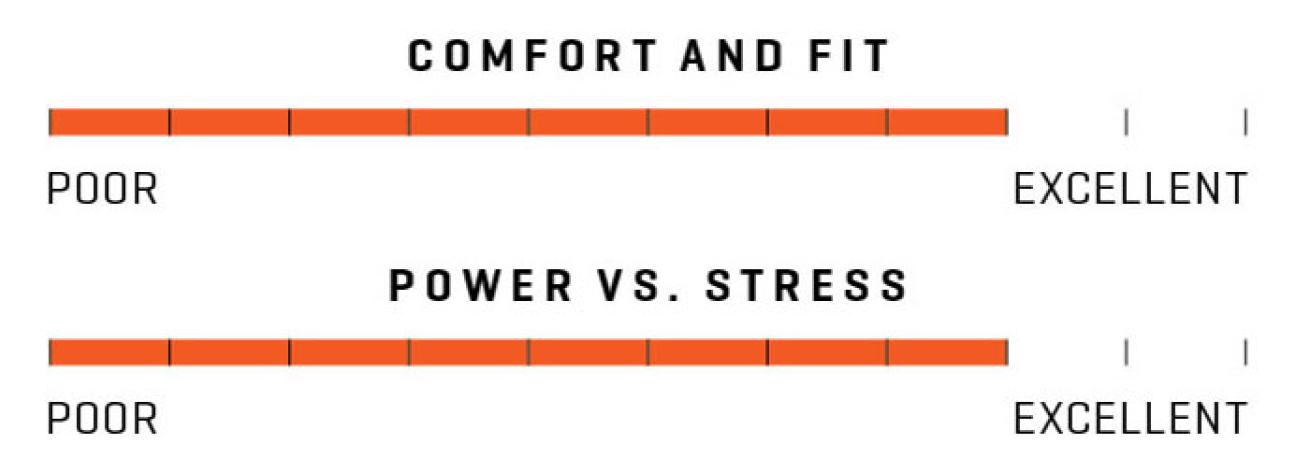
Scuba DivingMares Excite
Both were rated very good for power, but the Excite took higher scores for alternate kicking styles (dolphin in particular) and for stability. Divers noted the way it tracked straight when kicking hard, and praised it, as one diver noted, for being “nice and easy on my calves.”
Mares Excite Pro
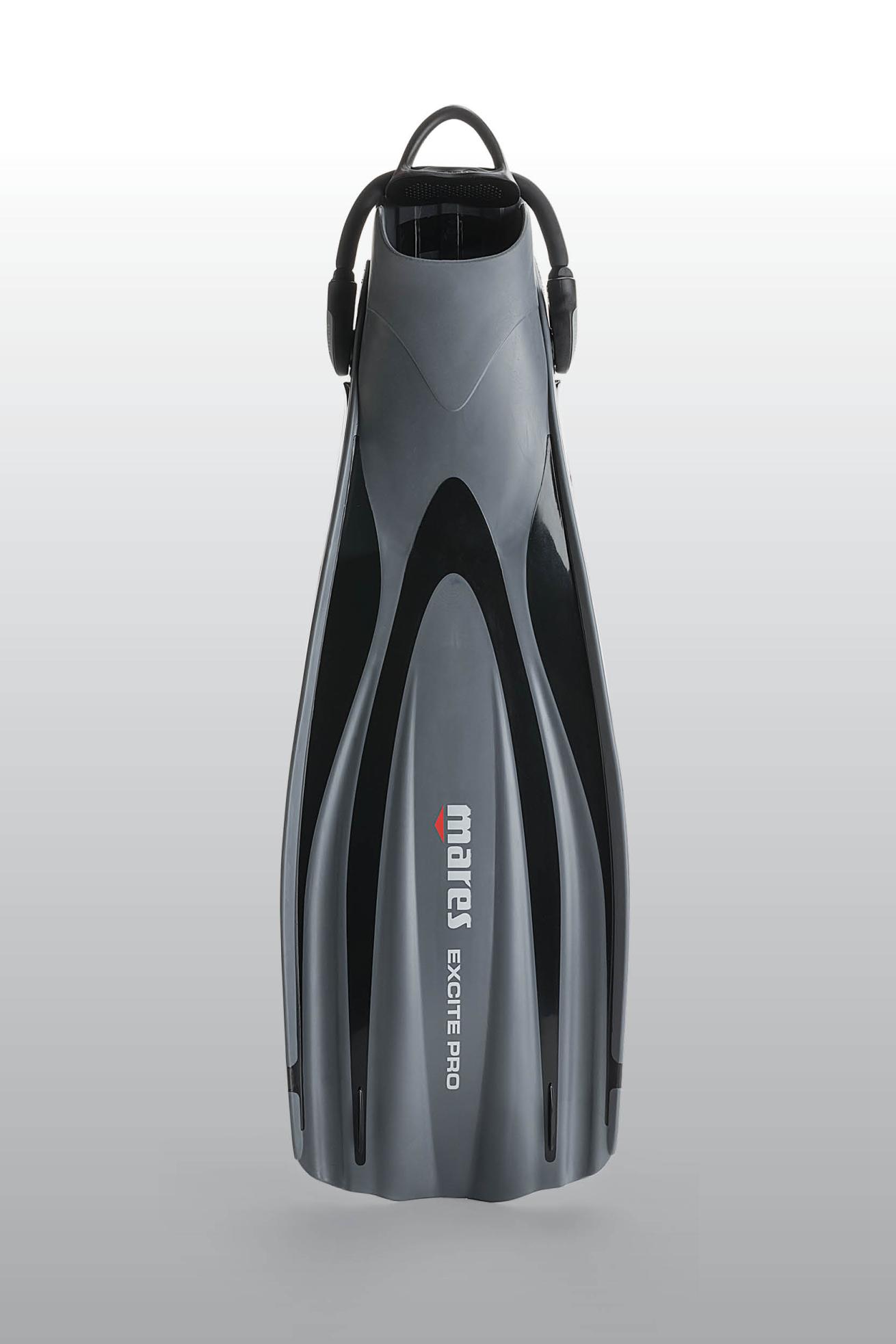
Jon WhittlePrice $170; Mares
While sharing the same overall design and dimensions as the Excite, the Excite Pro feels a bit firmer, and that gave it the edge when it came to frog kicking, where it was rated very good for the way a quick flick of its long blade set it gliding along. Also like the Excite, the Pro has a bungee strap with a wide, soft heel pad and a nonslip surface and big finger loop that divers found just about perfect, rating it excellent for ease of slipping it on and off.
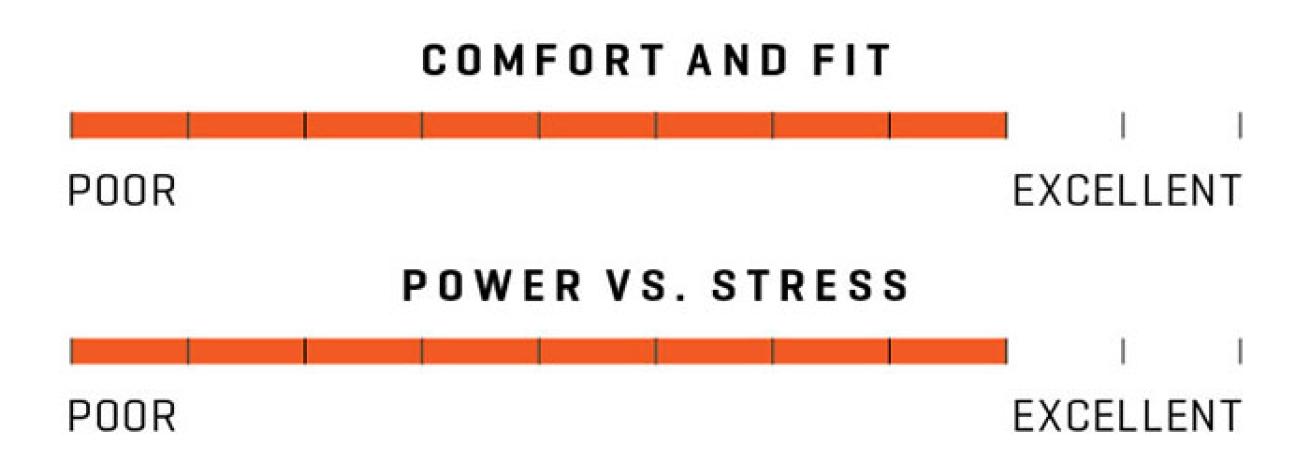
Scuba DivingMares Excite Pro
The strap worked very well with the foot pocket, which is firm on the bottom for good support and soft along the top and sides for comfort, providing power without binding or chafing. “Lots of power and acceleration,” noted one test diver, who was among the multiple divers who chose the Excite Pro as one of their favorites in the category.
Seac Propulsion S
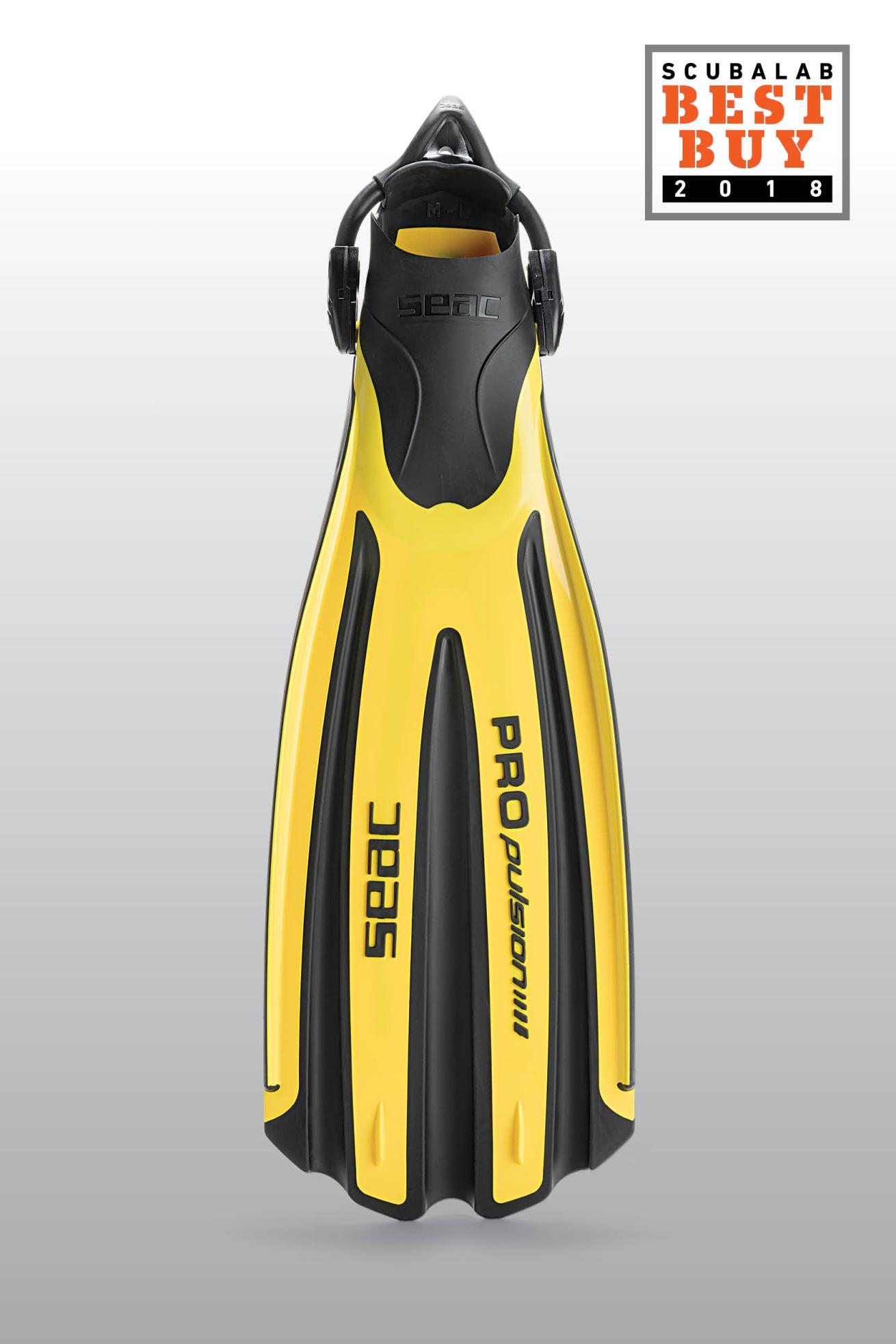
Jon WhittlePrice $89; Seac
The Propulsion S strikes a fine balance between performance, comfort and easy kicking. The soft channels running up the length of the blade keep it nice and flexy, while the stiff side rails allow for good power and acceleration. The Propulsion S “glides without a ton of effort,” one test diver commented. That said, the long blade can take a little time to get up to full speed. It scored very well for all styles of kicking — including surface swimming — and for overall comfort.
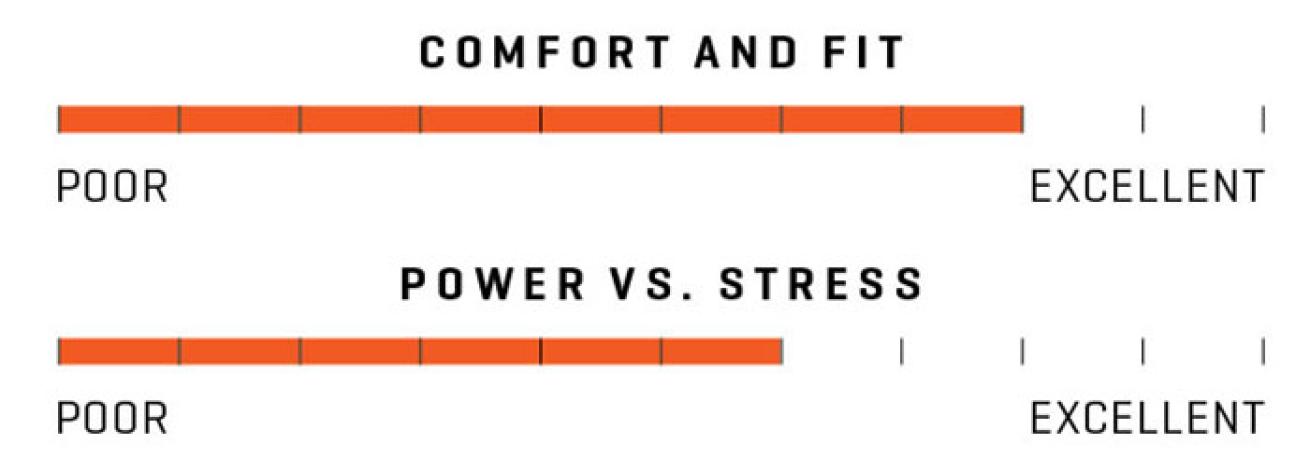
Scuba DivingSeac Propulsion S
While a couple of test divers wished for a slightly snugger fit from the bungee strap, several noted how much they loved the big, easy-to-grasp finger loop on the wide, curved heel pad. Providing a nice mix of all-around power and stability at a very attractive price, the Seac Propulsion S is our Best Buy.
Sherwood Scuba Triton Pro
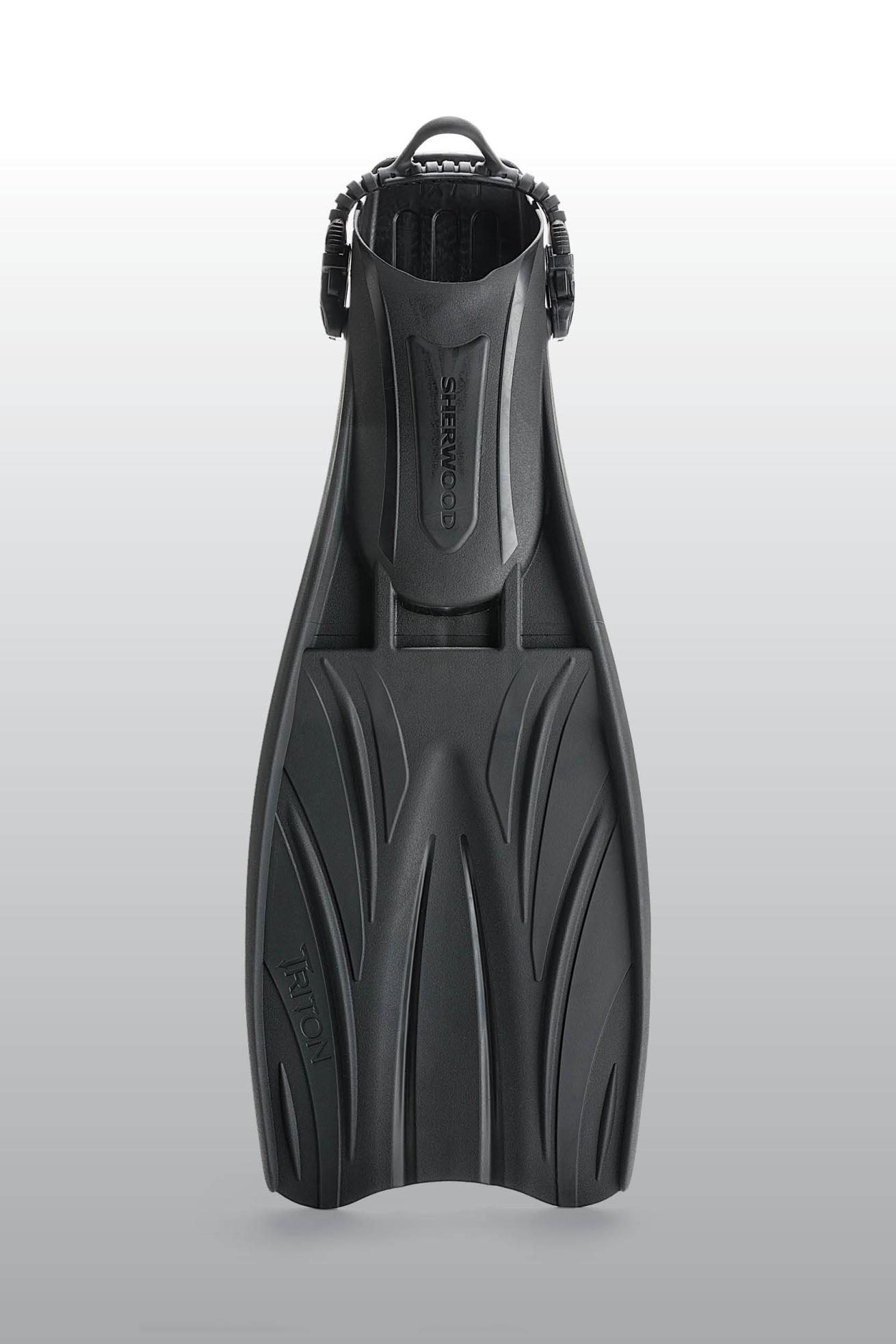
Jon WhittlePrice $173; Sherwood Scuba
The Triton Pro is an updated version of the Triton, with a similar lightweight, vented blade, but of a somewhat stiffer material for enhanced power. It impressed test divers with performance that was right up with the test winners, earning the highest score for power, especially during long, hard flutter kicking. Unfortunately, it was available at test time in only a single size (large/extra-large), which limited the number of testers who could get a secure, comfortable fit from its bungee strap.
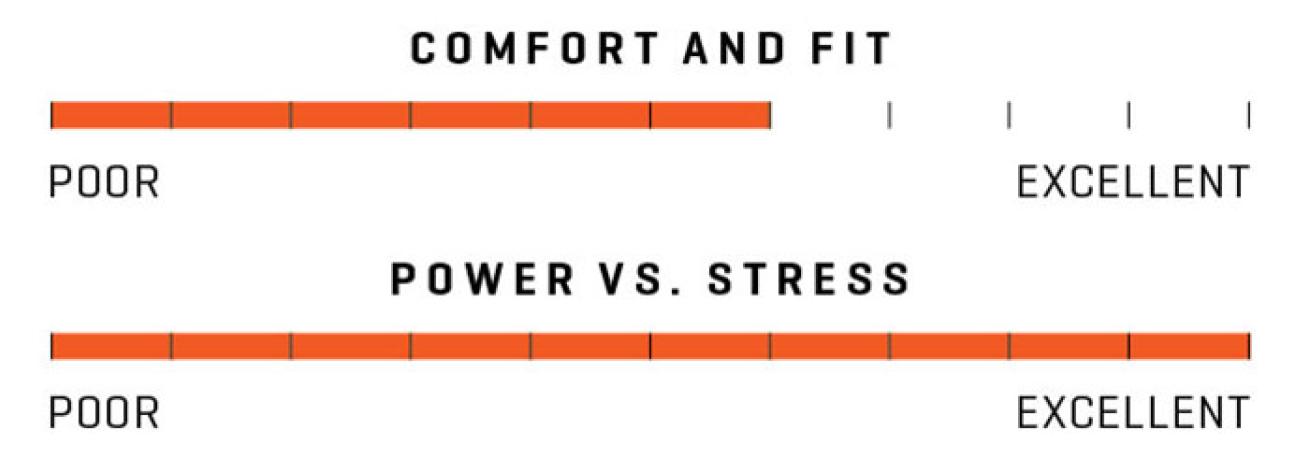
Scuba DivingSherwood Scuba Triton Pro
But testers who were able to dive with it praised the Triton Pro for its stability and efficiency no matter the kicking style, with its wide blade (nearly 10 inches across) delivering power and versatility that, as one tester summed up, made it a “really solid, all-around fin.”
Tusa Hyflex Vesna
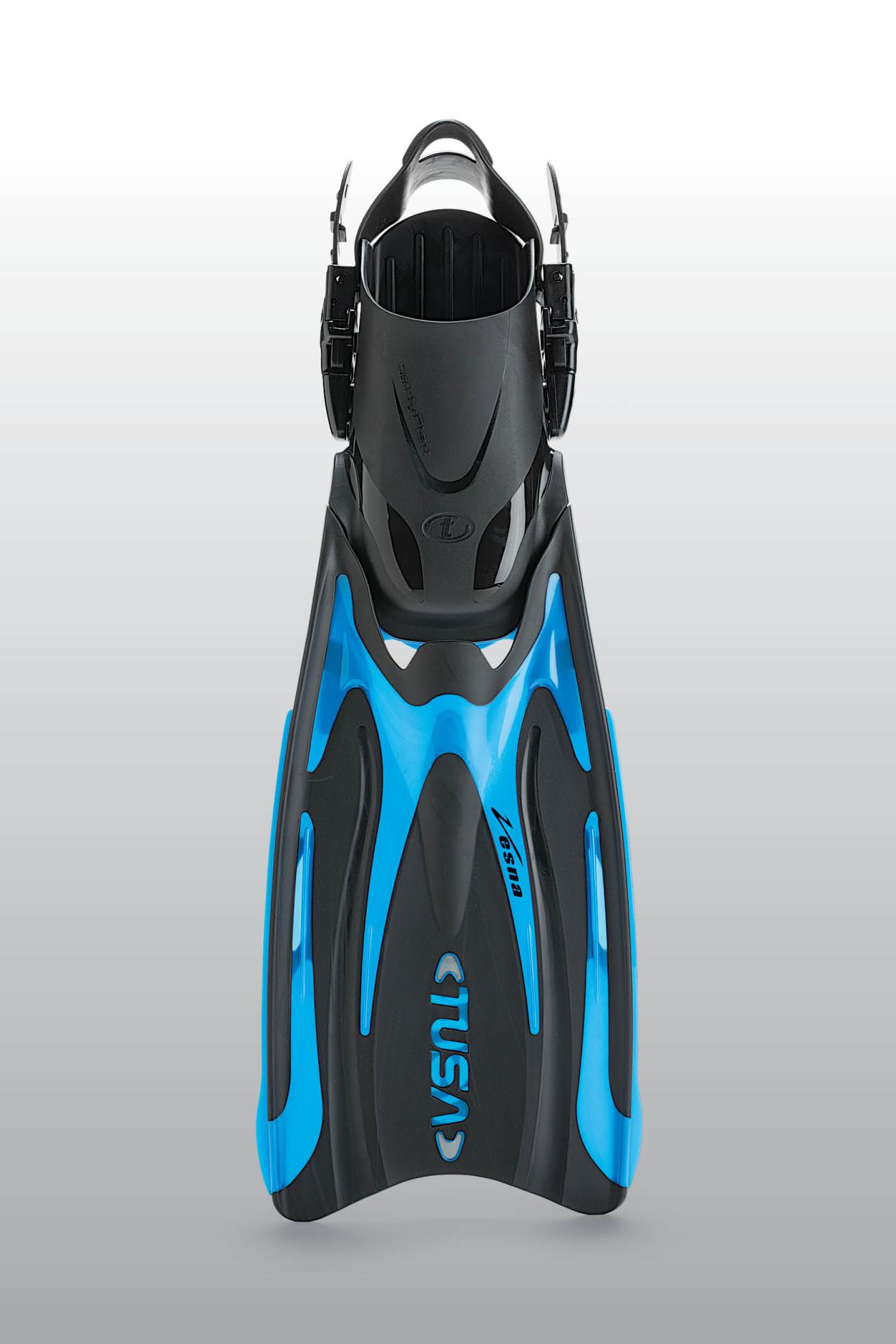
Jon WhittlePrice $159; Tusa
The Vesna is a carefree kicker that allows for decent power with minimal exertion. Its flexible design creates a soft kick that scored very well for flutter and surface swimming. The 24-inch blade (size medium) strugged a bit in hard acceleration but proved adept at tight turns and even backing up, earning the highest score for maneuverability in its category. “A lightweight, manueuverable, friendly fin,” was how one test diver summed it up.
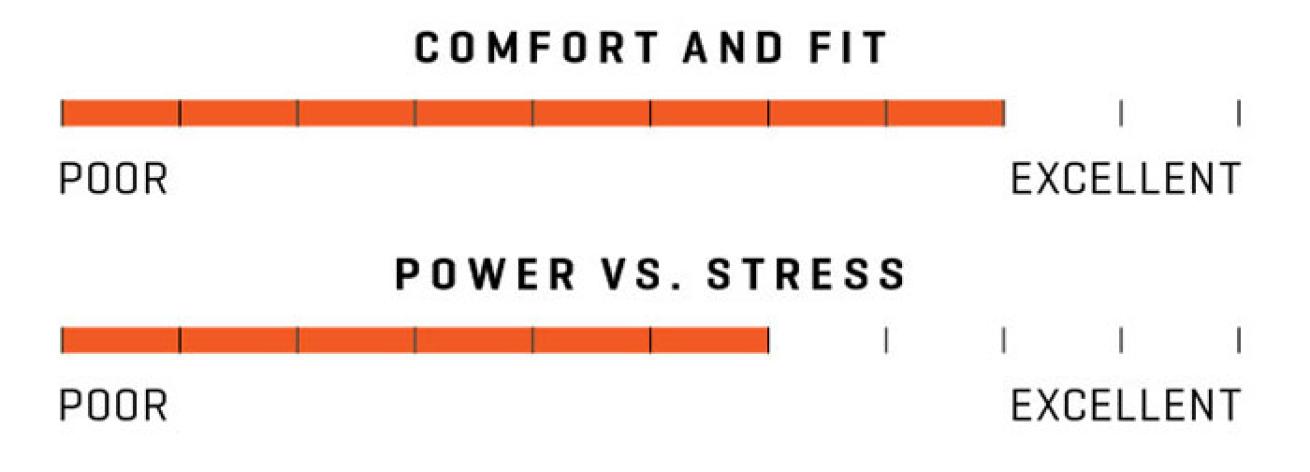
Scuba DivingTusa Hyflex Vesna
The ergonomic strap took the top score for adjustability, but test divers with smaller feet found the foot pocket to be a little roomy (even in a size small). The Vesna’s blade can easily be removed from the foot pocket, making the lightweight fin an attractive, travel-friendly option for those who frequent easy-diving destinations.
Tec Diving Fins
Apeks RK3
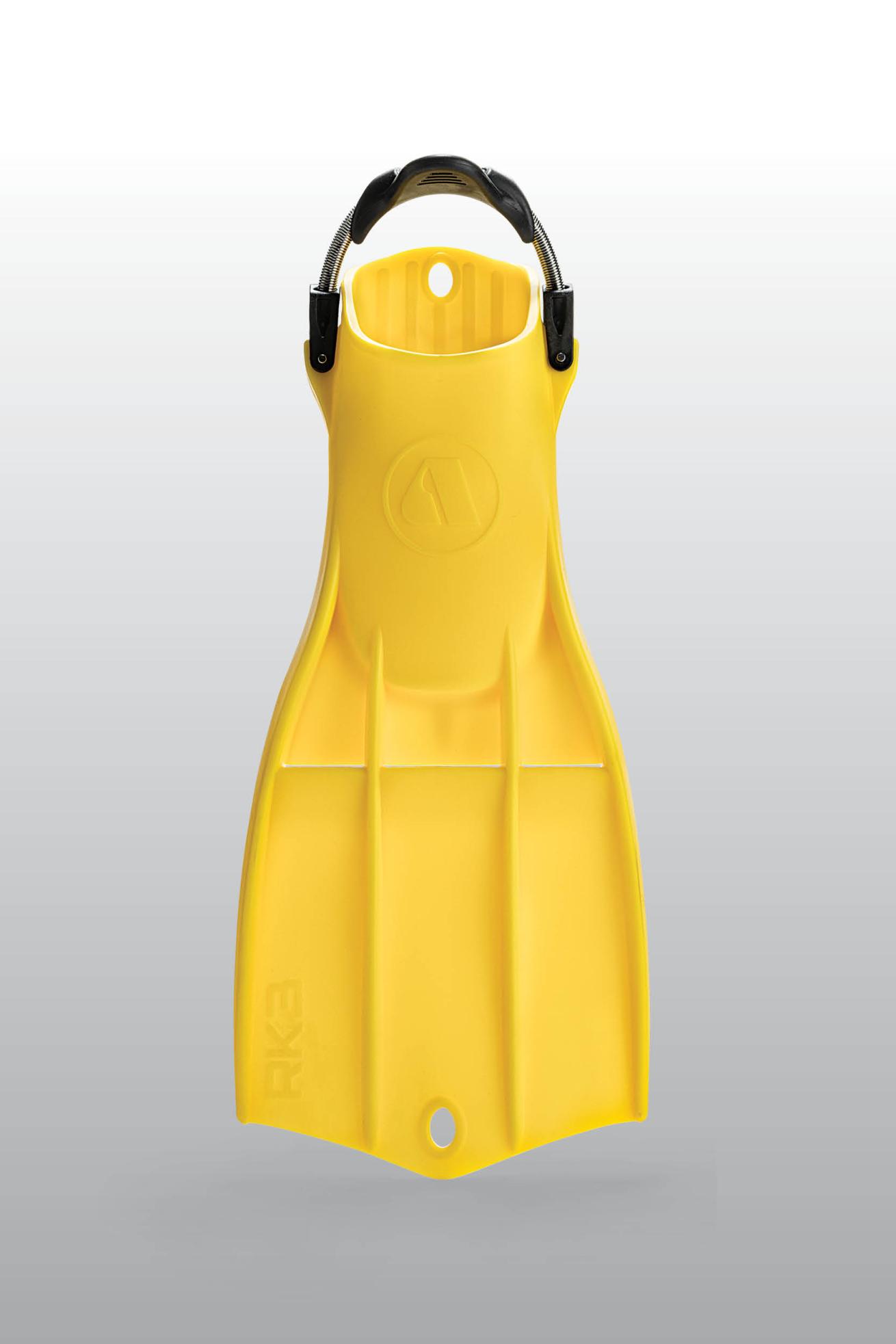
Jon WhittlePrice $160; Apeks
The rugged RK3 was designed with an oversize foot pocket to accommodate drysuit boots, but even our wetsuit-clad divers were able to appreciate this tec-oriented fin. We expected it to deliver effective frog kicks, but surprisingly, it also earned a perfect score for flutter kicking. Its wide, somewhat stubby blade (just over 21 inches in size large) allows precise navigation in tight spots, earning the highest marks for maneuverability in its category, with easy backing and helicopter turns.
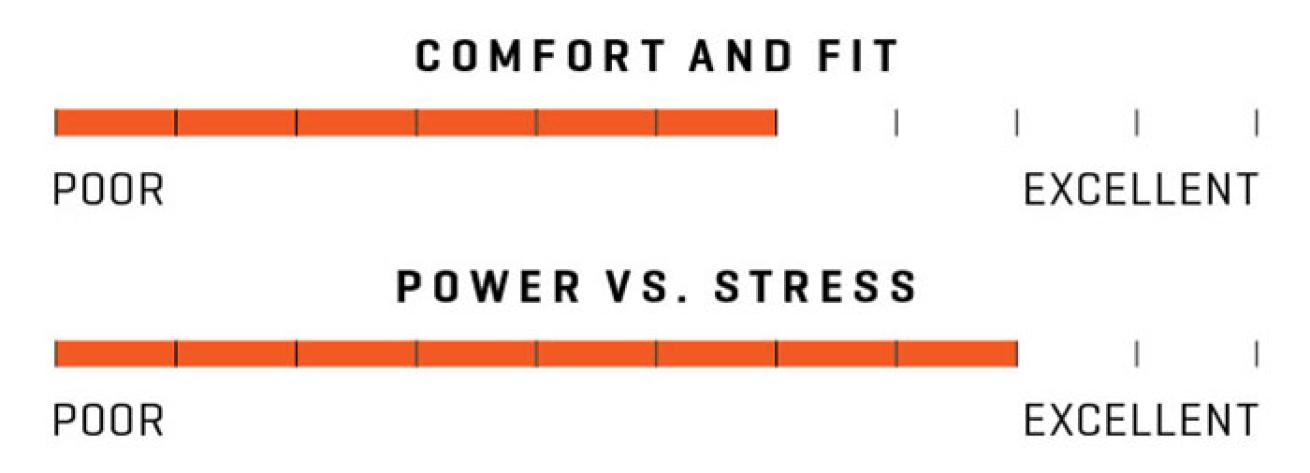
Scuba DivingApeks RK3
While some wetsuit-clad divers found the foot pocket roomy, the fin stayed snug thanks to an effective and ergonomic spring strap. A few divers griped that the strap featured a solid tab rather than a hole for their fingers, but others found donning and doffing to be, as one diver noted, “smooth as butter.”
Hollis F1 LT
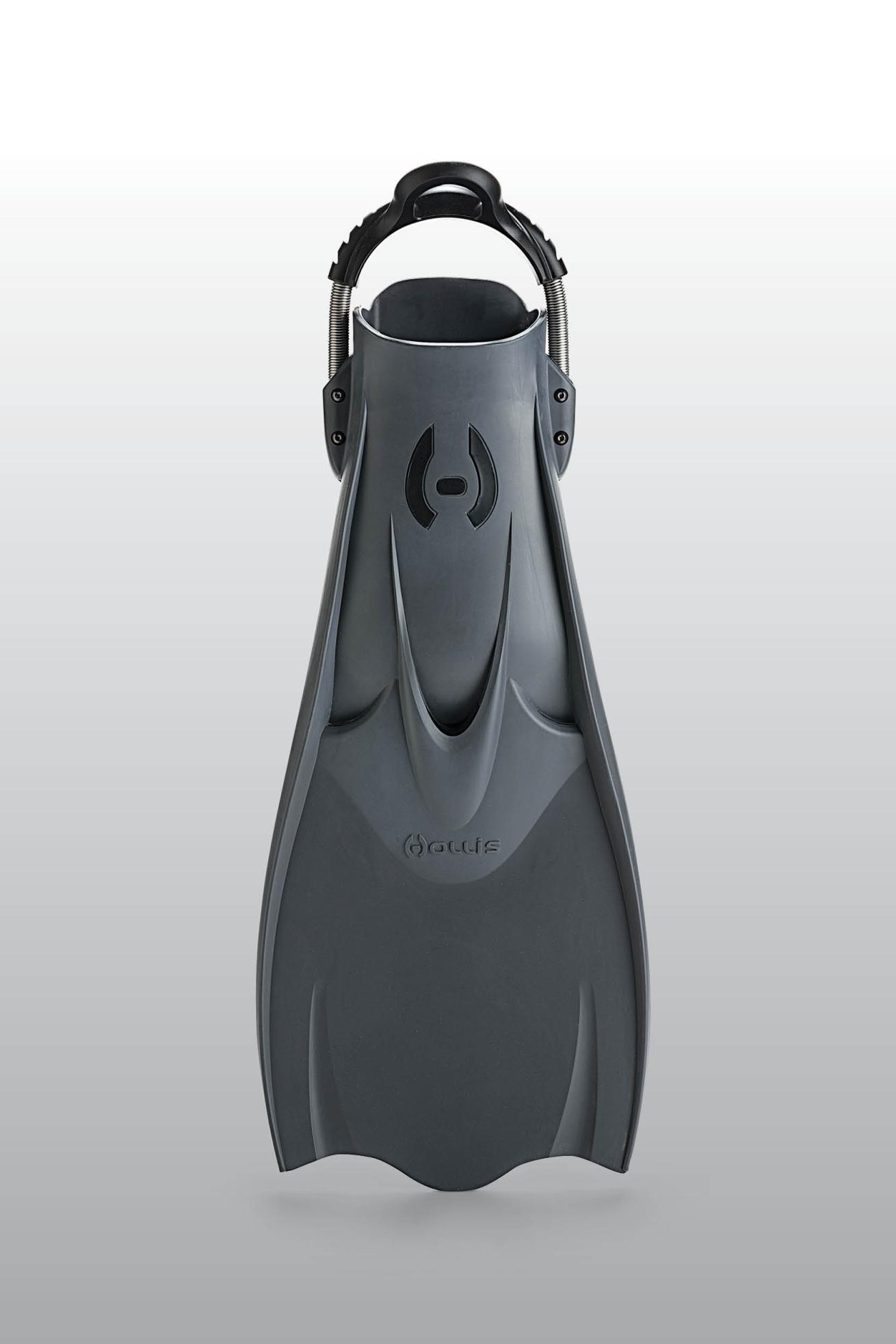
Jon WhittlePrice $169.95; Hollis
At almost 3½ pounds apiece (size regular), the F1 LT was the heaviest fin in the test, but though negatively buoyant it felt nicely weighted in the water. It has a generously sized, somewhat-boxy foot pocket that worked well with both drysuit and wetsuit boots, earning very good scores for comfort. The spring strap (adjustable with tools to two positions) has a heavy-duty heel pad with a large finger loop that made for easy on and off. With its weight, the fin struggled a bit on the surface but was much happier once submerged — and surprisingly versatile.
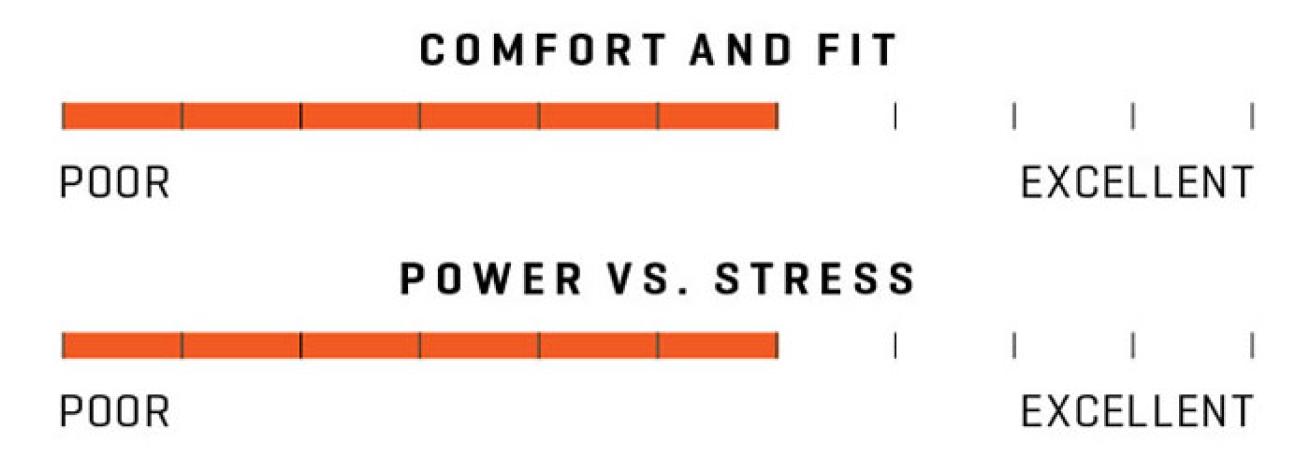
Scuba DivingHollis F1 LT
“These are frog feet with a tolerance for flutter,” one tester observed, and the short, stiff blade with a trio of curved vents provided a high degree of maneuverability. It was rated good for power by all divers and very good by drysuit divers.
Zeagle Recon
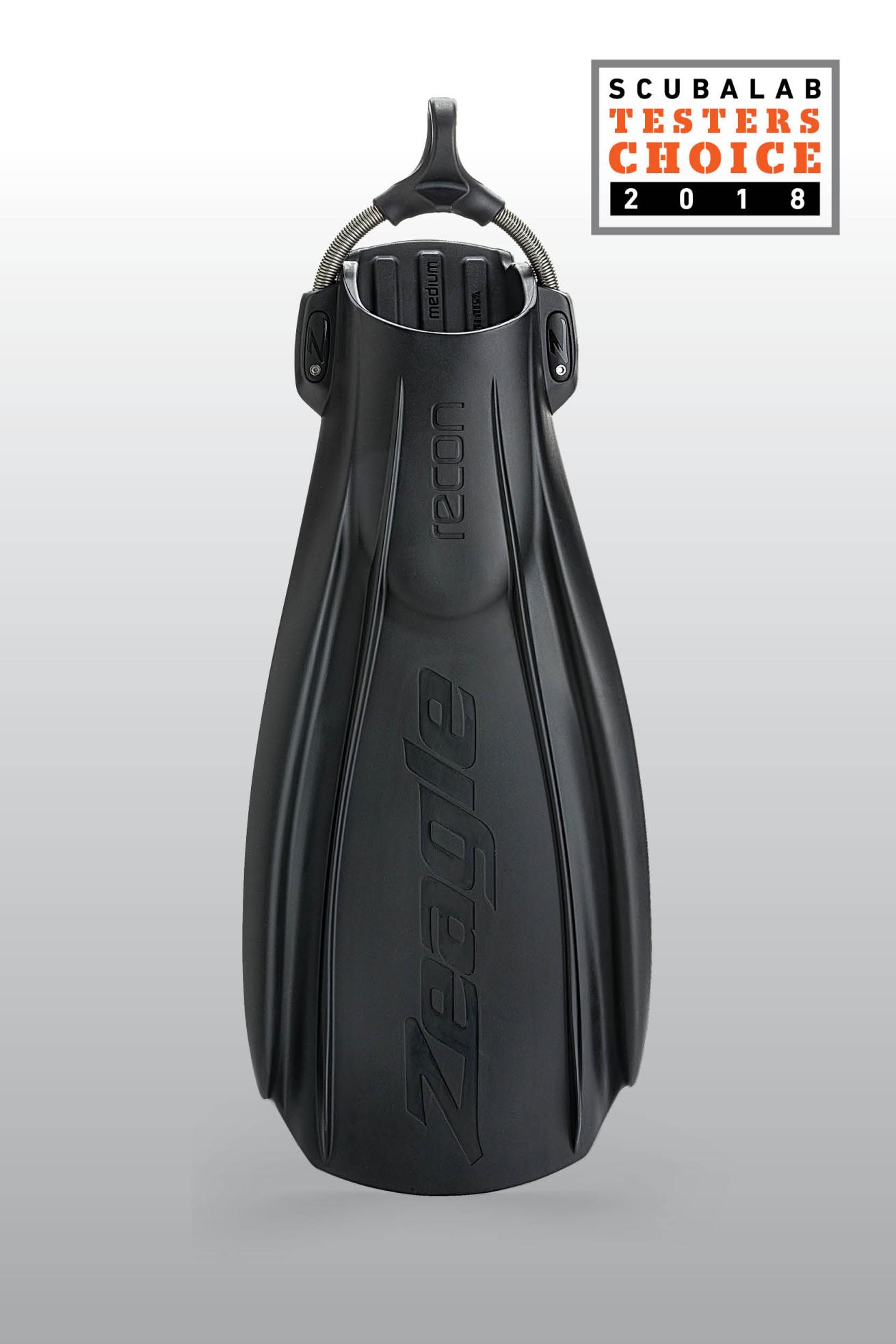
Jon WhittlePrice $159.95; Zeagle
The Recon proved to be an effective kicker in every style, even taking top scores for frog kick and surface swimming. Its beefy side rails, with the addition of a pair of supports integrated into the bottom of the foot pocket, helped it earn the highest score for power in its category, and prompted tester remarks such as “feels like an extension of my foot.” The 21-inch blade (size medium) was rated very good for acceleration but just good for maneuverability.
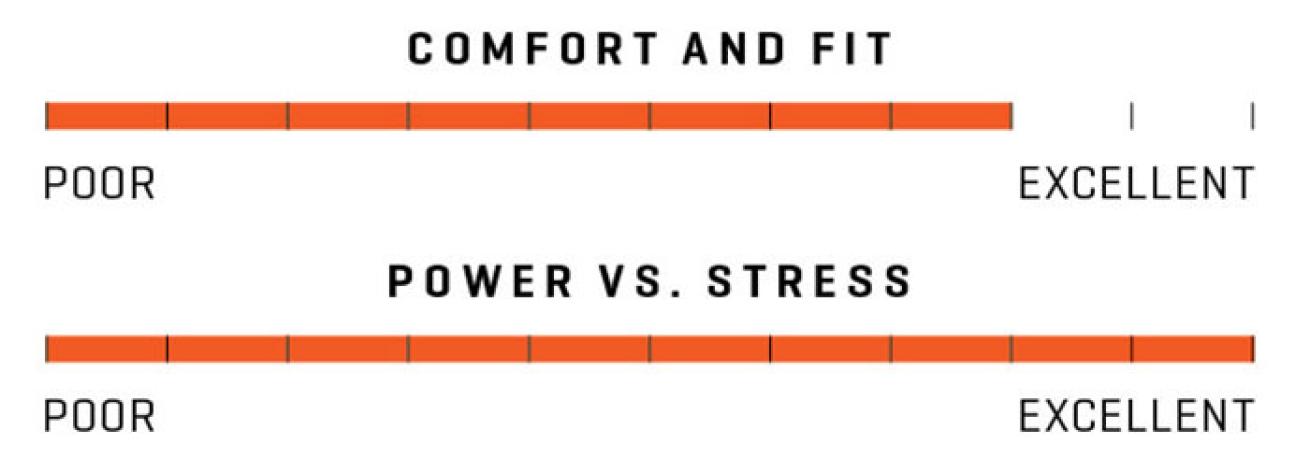
Scuba DivingZeagle Recon
Donning and doffing were effortless thanks to the large vertical finger loop on the spring strap, which has a nut-and-bolt two-position adjustment. While most divers found the Recon’s sizing a smidge large, it was rated very good for comfort and fit. For outstanding performance and versatility, the Zeagle Recon is our Testers Choice for tec fins.
How We Score
The bar graphs with each review show the fins’ combined test-diver scores for overall comfort and fit and for power versus stress.
The scoring is:
1=poor 2=fair 3=good 4=very good 5=excellent
How We Test
We tested fins at Alexander Springs Recreation Area in central Florida. Test divers used underwater slates to record comments and rate each fin from 5 (excellent) to 1 (poor) in the following categories:
Ease of Donning: Both in and out of the water, how easy is the fin to put on?
Adjusting for Fit: If straps and buckles are adjustable, how effective and easy to use are they? Are they intuitive or complicated to operate?
Fit and Comfort: How comfortable and secure is the fin on the foot? Does it slip/slide/pinch, etc., during hard kicking?
Stability: Do the fins track straight? Do they have a tendency to wobble, slice side to side, or strike each other while kicking?
Power vs. Stress: Your perception of the propulsion produced during the kick cycle relative to the amount of effort you put into the kick.
Flutter Kick: The ease, efficiency and stability of the fin in flutter kick.
Frog Kick: The ease, efficiency and stability of the fin in frog kick.
Other Kick Styles: The comfort, efficiency and stability of the fin in dolphin, scissor or other kick style.
Acceleration: How efficiently do the fins allow you to quickly increase speed?
Maneuverability: How well do the fins allow you to get in and out of tight locations, including spinning, backing up or reversing direction?
Surface Swimming: While on the surface on scuba or snorkel, how efficiently do the fins propel you relative to the effort?
Ease of Removing Fins: How easily can you remove the fins, in and out of the water? Are the straps or buckles easy to grasp? Is it unusually difficult to slide your boot out of open-heel pockets?
Fins also were evaluated for weight, buoyancy characteristics, construction/durability, and the effectiveness of nonslip material on the bottom. Fins in the technical category were evaluated by divers using both wetsuits and drysuits.

